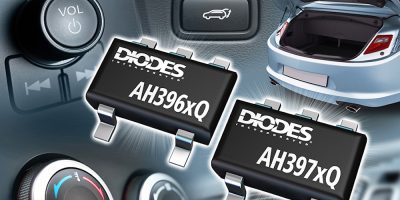Additions to the Kria portfolio of adaptive system on module (SoM) and developer kits have been announced by AMD. The Kria K24 SoM and KD240 Drives starter kit are available to order now.
The Kria K24 SoM offers power-efficient compute in a small form factor and targets cost-sensitive industrial and commercial edge applications, explained the company. InFO (integrated fan-out) packaging results in the K24 being half the size of a credit card while using half the power of the larger, connector-compatible Kria K26 SoM.
It provides high determinism and low latency for powering electric drives and motor controllers used in compute-intensive DSP applications at the edge, such as electric motor systems, robotics for factory automation, power generation, public transportation such as elevators/lifts and trains, surgical robotics and medical equipment such as MRI beds, and also EV charging stations.
The KD240 Drives starter kit is a motor control-based development platform. Coupled with the 24 SoM, users can quickly develop motor control and DSP applications at a reduced time to market and without requiring FPGA programming expertise.
The K24 SoM features a custom-built Zynq UltraScale+ MPSoC device and the supporting KD240 starter kit is a sub-$400 FPGA-based motor control kit. Enabling developers to begin at a more evolved point in the design cycle, the KD240 provides easy access for entry-level developers compared to other processor-based control kits.
The K24 SOM is qualified for use in industrial environments with support for more design flows than any generation before it, said AMD. That includes familiar design tools like Matlab Simulink and languages like Python with its extensive ecosystem support for the PYNQ framework. Ubuntu and Docker are also supported. Software developers can also use the AMD Vitis motor control libraries while maintaining support for traditional development flows.
“The K24 SOM delivers high performance-per-watt in a small form factor and houses the core components of an embedded processing system on a single production-ready board for a fast time to market,” said Hanneke Krekels, corporate vice president, Core Vertical Markets, AMD.
It is estimated that around 70 per cent of the total global electrical use by the industrial sector is tied to electric motors and motor-driven systems. AMD said that even a one per cent improvement in the efficiency of a drive system can have a significant positive impact on operational expenses and the environment.
The KD240 is supported by an optional motor accessory pack (MACCP), with additional motor kits available in the future that can be purchased separately for an enhanced ramp-up experience for developers.
K24 SOMs are offered in both commercial and industrial versions and are built for 10-year industrial lifecycles. In addition to support for expanded temperature ranges, the industrial-grade SoM includes ECC-protected LPDDR4 memory for high-reliability systems.
The K24 commercial version is shipping today, and the industrial version is expected to ship in Q4.







